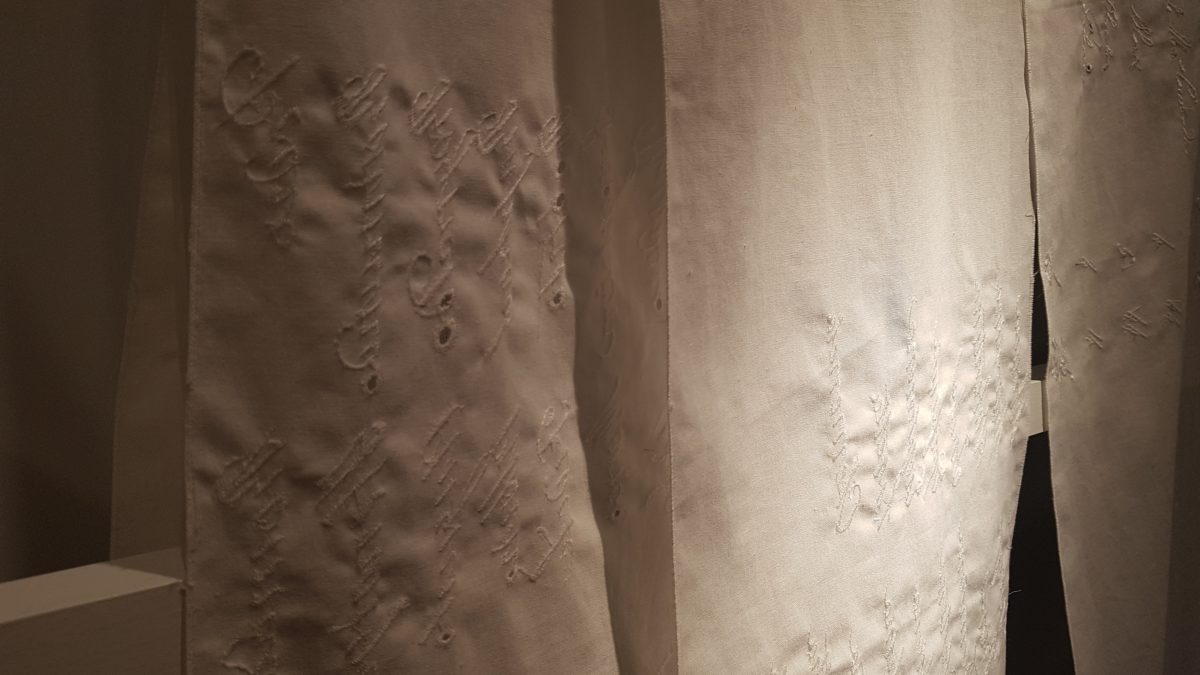Denise Bertschi

Denise Bertschi: Helvécia, Brazil, 2017
Eyelet embroidery and excerpt of 3-screen HD video
Courtesy the artist
Helvécia, Brazil, 2017
Bertschi spent many months in Bahia (northeastern Brazil) in a locality with the telling name “Helvécia” in order to find traces of a Swiss presence there. Helvécia was settled as part of a larger colony which, in turn, was named after Maria Leopoldina, the Austrian wife of Pedro, prince regent of Portugal and the future Emperor of Brazil.
Leopoldina was, first and foremost, a site for cultivating coffee. And this was done by enslaved West Africans who toiled under German and Swiss domination. The Hamburg consul Peter (Pedro) Peycke was one of the founders of the colony and coordinated cultivation, trade and communications with the authorities. His descendants, now with the family name “Krull,” have lived in Helvécia to this day.
With the importation of enslaved people to Brazil, which the Portuguese engaged in on a massive scale, cultural forms and religious concepts also reached the “New World,” becoming broadened and changed by contact with indigenous and European traditions. For instance, the combat dance of capoeira, now popular with Western middle-class children, was developed by the enslaved as a way to practice martial arts despite such practice being forbidden (as slaveholders lived in constant fear of uprisings). Such training was possible, however, when camouflaged as a cultural expression: as a dance.
Traditional Swiss handicrafts also made their way to Brazil. St. Gallen eyelet embroidery was, in the 19th century, one of the main export products of then-poor Switzerland. These precious textiles, in flawless white, became incorporated into Afro-Brazilian religious rituals. In her work, Bertschi combines the technique of eyelet embroidery with papers of the bygone colonial authorities, which have since moldered in the tropical air. These hole-ridden papers document the German and Swiss ownership of enslaved people in Bahia.
Denise Bertschi’s work was commissioned for the exhibition Coffee from Helvécia, curated by Marcelo Rezende and Eduardo Simantob